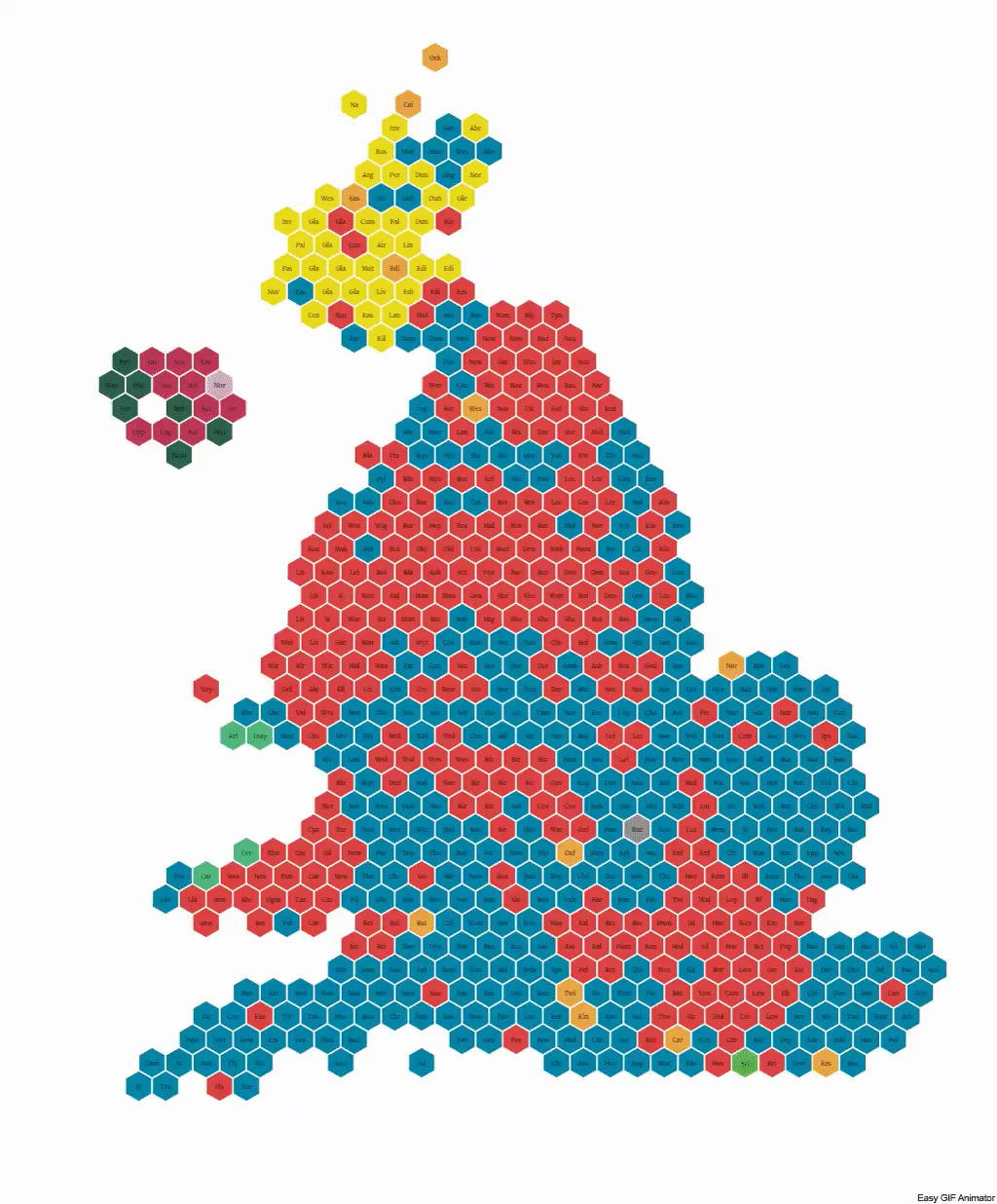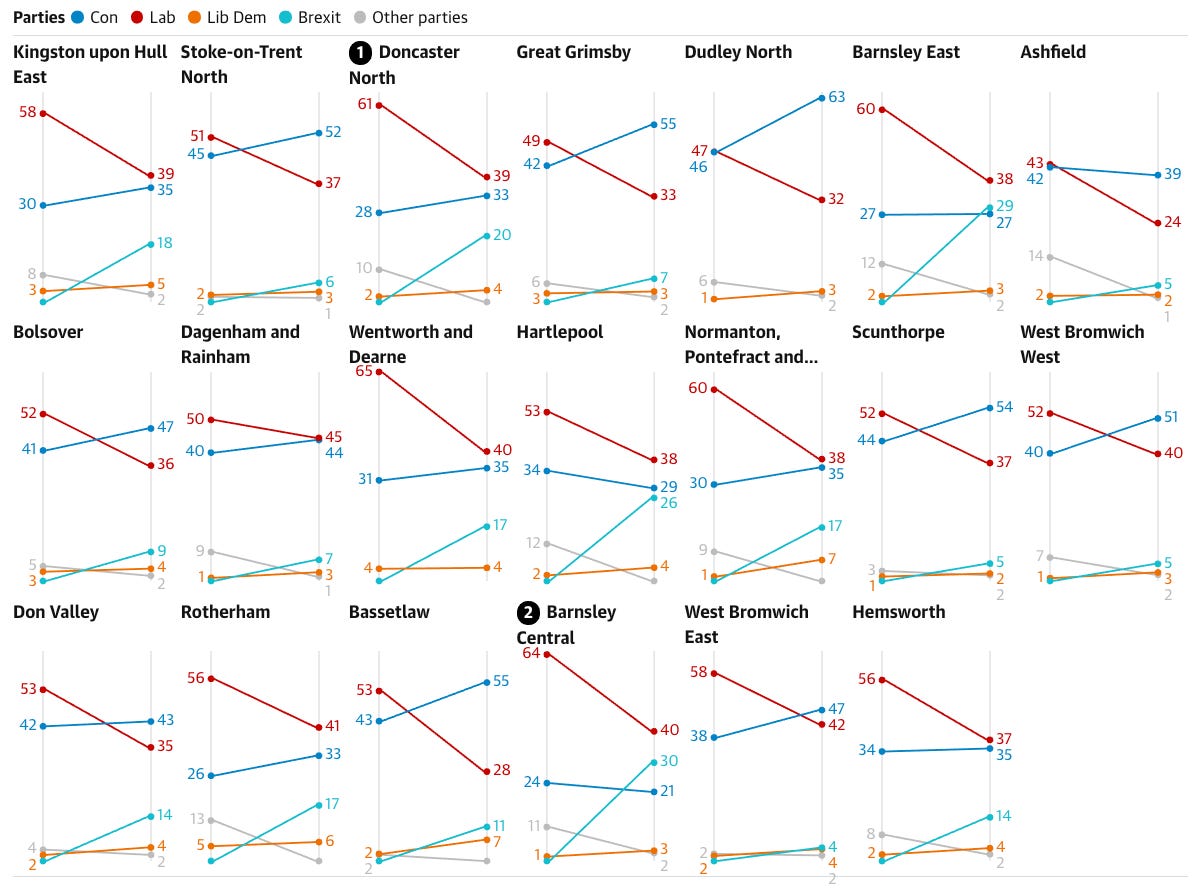🇬🇧 🗳️ UK General Election Special
Hello! Welcome to a special edition of Inside The Newsroom that will round up what went down last night in the United Kingdom, the third general election in less than five years. Last night’s ballot was largely seen as a vote on Brexit, after parliament had been at a virtual standstill over the UK’s exit from the European Union for the past three years. The results began with the 10pm exit poll, a survey of thousands of voters immediately after they’d cast their ballot from 144 constituencies in England, Scotland and Wales. The exit poll has been scarily accurate in past elections, and last night’s edition was pretty spot on, predicting a majority of 86 seats for the Conservatives, with the actual result being an 80-seat majority. It was a pretty terrible night for left-wing politics. Below is a round up of the night’s events. Enjoy 📊

Boris Wins Historic Majority
Last night’s results were historic and the term ‘political earthquake’ is not hyperbole. This was the “Brexit election” — an implied third referendum on whether the UK should leave the EU, having voted to do so in 2016 and then the 2017 hung parliament that created political deadlock for the next two and half years. Boris Johnson’s victory is remarkable considering that just a year ago he was a backbencher within the Conservative Party, with his political ambitions seemingly destroyed having been frozen out of the party’s leadership race in 2016. We may never know exactly why he suddenly pulled out of the race at the behest of Michael Gove… I digress. Amid the chaos of results flooding in, the Tories took seats from Labour’s famous ‘red wall’, some that haven’t voted blue in 100 years. Shameful plug to my amazing graphics team at the Guardian for whipping this up at 5am this morning. It shows how constituencies that voted leave in the EU referendum deserted Labour in droves.

The Fall of Labour’s ‘Red Wall’
Similar to the fall of the Democratic Party’s ‘blue wall’ in the 2016 U.S. general election, Labour’s own version, the ‘red wall’, was left as red islands surrounded by a blue sea. Labour’s northern heartland stretched from the north of Wales right across to the Humber on the east coast of England. The first constituency to switch from red to blue was Blythe Valley, which had been in Labour hands since its inception in 1950. The Conservatives overturned a 23 point majority from the 2017 election, and it was a sign of things to come. In the end, Labour lost 42 seats, many of which came from its battered red wall.


And an episode of the excellent Anywhere but Westminster series explaining the importance of Labour’s red wall.
The End of Corbynism
The rise of Jeremy Corbyn almost never happened. In the aftermath of the 2015 election defeat that led to former Labour leader Ed Miliband’s resignation, Corbyn was encouraged to enter the leadership race merely to add a left-wing voice to an otherwise centrist field. After 13 years of centrist rule under Tony Blair and Gordon Brown, those on the far left flocked to Corbyn, who saw him as the first overt socialist leader in decades. While Corbyn’s brand of politics energized thousands, his progressive message failed to cut through the Brexit quagmire.
The silver lining to Labour’s bloodbath is the end of Corbyn, whose 203 seats last night is the worst performance for Labour in 84 years. Corbyn’s failure to stamp out antisemitism within the party, unrealistic public spending plans and an unclear message on Brexit led Labour into the abyss after four and a half years. Thanks to the fine folks at the Financial Times for putting together the below graphic.

Scottish National Party Back With 48 Seats
The SNP exploded onto the electoral scene in 2015 when it soared from six to 56 seats in Scotland out of a possible 59, which worked out as a rise from 20 percent of the Scottish vote to 50. They did so despite a loss by more than 10 points in the referendum on Scottish independence just a year earlier. They then dipped to 35 seats in 2017, but rebounded in 2019 in a way that few analysts saw happening. Another referendum on Scottish independence could be right around the corner.
Lib Dems Have Frustrating Night
Leader Jo Swinson shockingly lost her seat of East Dunbartonshire in Scotland to the SNP, which led to her immediate resignation. This means that the Lib Dems, who tried their hardest to portray the party as the safe and secure choice, will begin the search for their fourth leader in less than five years. The Lib Dems were the only major party heading into the election with an unequivocal policy of revoking Article 50 and remaining in the EU, but that seems to have cost them, losing ten seats to remain the fourth-largest party in Westminster.
Brexit Party Cost Labour AND Conservatives Seats
Perhaps the most important man in the whole Brexit movement, Nigel Farage, started the Brexit Party at the beginning of this year, after driving the debate on the UK’s relationship with the EU for decades. Farage’s importance in the 2019 general election cannot be understated. It became clear last night that the political landscape of the UK was redrawn according to Brexit, rather than the UK’s traditional north-south divide.
Fears of the Brexit Party splitting the vote in Conservative-held seats led the Brexit Party to stand down in the 317 seats the Conservatives won in 2017. As early results trickled in last night, it became clear that Labour had held onto some historically safe seats by the skin of their teeth, with the Brexit Party likely costing the Conservatives even more gains. In Houghton & Sunderland South, for example, Labour gained 41 percent of the votes, yet the Conservatives and Brexit Party won a combined 48 percent, a trend that developed across the north of England. Another plug to the my visuals team at the Guardian for the below magic.




